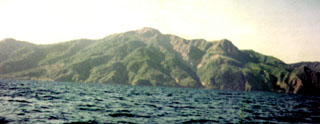Report on Paluweh (Indonesia) — 28 November-4 December 2012
Smithsonian Institution / US Geological Survey
Weekly Volcanic Activity Report, 28 November-4 December 2012
Managing Editor: Sally Sennert.
Please cite this report as:
Global Volcanism Program, 2012. Report on Paluweh (Indonesia) (Sennert, S, ed.). Weekly Volcanic Activity Report, 28 November-4 December 2012. Smithsonian Institution and US Geological Survey.
Paluweh
Indonesia
8.32°S, 121.708°E; summit elev. 875 m
All times are local (unless otherwise noted)
Based on analyses of satellite imagery and wind data, the Darwin VAAC reported that during 28 November-4 December ash plumes from Paluweh rose to altitudes of 1.5-2.4 km (5,000-8,000 ft) a.s.l. and drifted 35-65 km NW and W.
The Volcano Discovery team observed Paluweh during 30 November-2 December. They reported that a lava dome seemed to be visibly growing from all sides, with almost constant incandescent rockfalls in multiple areas. The dome was about 150 m high, the highest point on the island, and the basal diameter was 200-250 m. A vent on the upper E part of the dome ejected ash for periods of several hours and produced jet-like degassing sounds. A steam-and-ash plume rose several kilometers. Small pyroclastic flows descended the lava dome, but vegetation immediately surrounding the dome was only slightly damaged by fires caused by hot blocks and ashfall. The report also noted that local people observed the dome growing next to the Rokatenda crater in late October.
Geological Summary. Paluweh volcano, also known as Rokatenda, forms the 8-km-wide island of Palu'e north of the volcanic arc that cuts across Flores Island. The broad irregular summit region contains overlapping craters up to 900 m wide and several lava domes. Several flank vents occur along a NW-trending fissure. The largest historical eruption occurred in 1928, when strong explosive activity was accompanied by landslide-induced tsunamis and lava dome emplacement. Pyroclastic flows in August 2013 resulted in fatalities.
Sources: Darwin Volcanic Ash Advisory Centre (VAAC), VolcanoDiscovery

